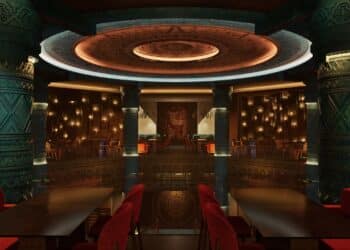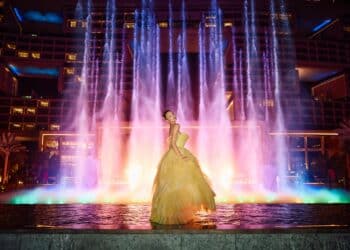As an all year-round holiday destination and only a short flight away from Dubai, the Maldives has gained traction as an attractive getaway for GCC travellers. As the Middle East remains one of the emerging markets for the island destination with a total market share of 3.4%, Coetzer Deysel, cluster general manager, Anantara Dhigu Maldives Resort tells Hotel News ME how the three island resorts are capturing their fair share of the GCC market.

The Maldives archipelago consists of 1,190 tiny islands scattered across the Indian Ocean. Only 185 of these islands are inhabited, while the others are used largely for tourism and agriculture. The atolls are composed of live coral reefs and sand bars perched atop a 960km submarine ridge, while the land features lush tropical vegetation with abundant local coconut palms. With an average ground level of 1.5m above sea level, the Maldives is by far the lowest country on earth and as such has a very fragile ecosystem. Eighty of these idyllic islands are occupied with tourist resorts in the Indian Ocean. They lie south-southwest of India and are considered part of Southern Asia. Tourism is the largest economic industry in the Maldives. A tourist resort in the Maldives consists of an exclusive hotel on its own island, with its population entirely based on tourists and work force, with no local people or houses. These islands developed for tourism are approximately 800 by 200 metres in size and are composed of sand and coral to a maximum height of about two metres above the sea. In addition to its beach encircling the island, each island has its own “house reef” which serves as a coral garden and natural aquarium for scuba divers and snorkelers. The shallow water enclosed by the house reef also serves as a large natural swimming pool and protects swimmers from the ocean waves and strong tidal currents outside the house reef.
Attracting GCC visitors
As an all year-round holiday destination and only a four-hour flight away from Dubai, the Maldives has gained traction as an attractive getaway for GCC travellers and the Middle East remains one of the emerging markets for the island destination with a total share of 3.4%. In 2015 a total of 41,976 tourists from the Middle East visited the Maldives compared to arrival figures in 2014, representing an increase of 12.8%. With figures revealed for the first half 2016, an increase of 11.7% was observed by the tourism board with peak months including February 2016 where there was an 8.9% increase in arrivals recorded. As the Maldives is well known for its breath taking vistas, its nature and its enigmatic underwater attractions. The island nation offers excellent diving spots with an array of outdoor activities such as snorkeling, surfing and fishing and the tourism board is currently busy launching a series of roadshows in Saudi Arabia and Dubai to build awareness of the vast activities available for GCC travellers.
Standing out

With 80 of the atolls occupied by 5-star luxury resorts, hotels on the islands have to compete for business, offering elements of culture an ample selection of outdoor activities and relaxation areas too. As travellers from the Middle East typically travel with large families, resorts on the atolls have now begun to tap into the family friendly elements of a once honeymoon dominated destination.
A prime example of catering to all markets is Anantara Dhigu, Veli and Naladhu Maldives. Encircled by mystic lagoons and unspoilt crystal shores, Anantara Dhigu Resort is a sanctuary on a secluded paradise island. Competing for its fair share of business, Anantara Dhigu is spread across 20,000 square meters of tropical terrain on Dhigufinolhu Island in the Maldives’ South Male Atoll, a 35-minute speedboat journey from the island nation’s international airport, Male. Located in one lagoon, the resort offers with three properties each with an entirely different identity, catering to a different set of markets. Coetzer Deysel, cluster general manager of all three resorts explains: “The Maldives has evolved from a honeymoon destination to a family destination. There are still plenty of honeymooners coming to the islands, but we now see many more families from GCC countries coming to the resorts. In order for us to cater to every market we have the three resorts, capable of catering to a vast audience. We have Anantara Dhigu which is the family focused and friendly resort, Anantara Veli which is an adults only resort consisting of mainly water villas and Anantara Naladhu, our high end luxury island with large private villas.”
With privacy a key contender for many GCC travellers, Deysel adds: “We find many of our visitors from the Middle East prefer to stay on Naladhu, if they are coming from Dubai they are already accustomed to high standards offered by the hotels there, and subsequently they expect the same kind of service here. As many of the female travellers require private quarters, Naladhu gives them complete privacy for dining, sunbathing or relaxing. The large private villas here either face the ocean or the lagoon, out of view from any of the other villas and resorts.”
Using architecture to charm

Acclaimed Male-based architect Mohamed Shafeeq from Group X Design Associates and Thailand-based interior design company, Abacus, headed by John Lightbody, have fashioned the resort’s distinctive environment as a creative complement to the natural beauty of the destination, local cultural traditions and historic heritage. Deysel explains why design is so important in staying competitive in attracting new markets such as the Middle East: “Using age old techniques such as thatched palm roofs the 110 deluxe villas and suites, ranging from 180 to 310 sqm, are either poised over the water with sweeping ocean views or nestled along a pristine stretch of beach. Comprising 103 one-bedroom villas and suites, some with private plunge pools, five inter leading two-bedroom family villas, and five outer leading two-bedroom pool villas, each building is a simple, natural sanctuary, belying the more intricate and significant design within.”
With more families travelling from the Middle East, Deysel uncovers how the resort caters to larger families: “Family accommodation options include Sunset Family Villas and Two Bedroom Anantara Pool Villas nestled along a pristine stretch of beach. The 165 sqm Sunset Family Villas are ideal for families with young children, affording comfortable accommodation for two adults and up to three young children in luxurious surroundings. It consists of two bedrooms – one with a king size bed, the other with two single beds and room for a third single bed or baby cot – two bathrooms and a sundeck that extends out to a white powdery beach.”
Foodie variety
Like many of the hotels on a remote island, variety is key to keeping guests happy explains Deysel: “Middle Eastern travellers are used to fine food and great variety, they don’t want to feel restricted just because they are on an island. We offer a range of casual dining and fine dining, all with a different experience.
“The resort’s overwater dining experiences promise spectacular ocean and sunset views from the Anantara Signature restaurant Sea.Fire.Salt, the romance of Italian dining at Terrazzo and a calling back to Anantara’s Thai heritage at the Thai restaurant Baan Huraa.”
Featuring an alfresco wooden deck that is suspended over the turquoise ocean, Sea.Fire.Salt offers a crossroad of cuisines and cooking styles, each paired by, Salt Guru with one of 16 salts from around the world. Freshly caught local Maldivian fishes such as Wahoo, lobster and prawns, and prime aged imported cuts from Japan and Australia are offered at the restaurant.

Beneath the shimmering waters that surround the island archipelago of the Maldives, a fragile world quietly rebuilds itself. Coral reefs, the most diverse type of marine habitat, protect the pristine beaches at Anantara Kihavah Villas, Anantara Dhigu and Anantara Veli Resorts and guard their crystal-clear lagoons. They also support an astounding array of tropical fish, crustaceans and bizarre-looking molluscs. But for all of its beauty and apparent resilience, coral is a sensitive organism, vulnerable to extreme weather and sudden environmental changes. In its commitment to protect the environment, Anantara initiated a Coral Adoption Programme in 2011, a long-term plan designed to share learning experiences with guests, accelerate the regeneration of coral growth in the atoll reef, and ultimately ensure the future of this unique Maldivian destination. Extending across the expansive. Surrounded by the vastness of the ocean, the country is vulnerable to extreme weather as well as the effects of global warming. In 1998 more than 90% of shallow coral reef in the Maldives died when El Niño, a climatic phenomenon, raised sea temperatures by 4°C. It was enough to stress the coral and to release the microscopic algae that give them their kaleidoscopic colours, so the reef bleached. The coral has begun to regenerate since suffering from the bleaching event, but future temperature fluctuations threaten its survival.
“Over the last five years, over 100 frames have been planted and the reefs are showing signs of recovery and marine life has begun to return. Within a year of planting a frame, faster growing acropora coral such as staghorn and table coral have proven to completely cover the frame structures, while some slower growing species are introduced once the coral colonies are well established. Guests at Anantara Kihavah Villas, Anantara Dhigu and Anantara Veli can participate in reef creation and contribute to the on-going conservation effort by adopting a coral frame,” says Deysel.


































































